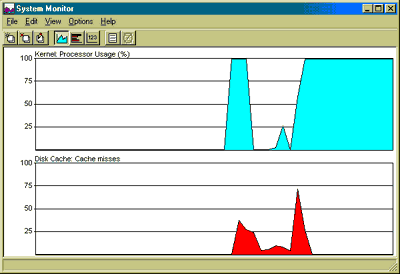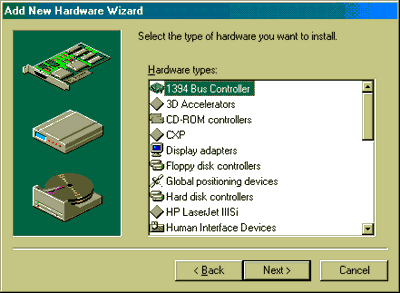
IMHO
February 25, 1998
John Swenson
MSDN Online
If you're a developer, you might be wondering what Windows 98 has to interest you. With the new operating system now in the release candidate stage, it's time to examine the successor to Windows 95, if you haven't done so already.
Even if your main interest is Windows NT 5.0, Windows 98 can teach you a lot about what's coming in that operating system. New features such as the Win 32 Driver Model, multimonitor support, and ACPI and OnNow power management technologies are all appearing in Windows 98 before they arrive in Windows NT 5.0.
Writing so-called "clean" applications for Windows 98 is also good preparation for designing clean applications for Windows NT 5.0. For details on how to do this, see the Microsoft Designed for Windows NT 5.0 and Windows 98 Logo Handbook (see the Microsoft Windows Family Web site at http://www.microsoft.com/windows/thirdparty/winlogo/logo/default.htm). Pay special attention to the "Best Practices" section.
With Windows 98, you don't have to worry about the backward compatibility of your Windows applications. All your apps written for Windows 95 should run fine under Windows 98. But if you look closely at the new operating system, you might find some new features your apps can take advantage of.
The first time experienced Windows 95 users fire up Windows 98, most won't notice much new, since Microsoft hasn't made any significant changes in the user interface for Windows 98. But if you're a developer, start digging. You'll soon discover there's a lot of new technology in Windows 98, most of it hidden under the covers. If someone has told you the only big new feature in Windows 98 is an integrated version of the Internet Explorer 4.0 browser, don't believe them.
I've been running Windows 98 beta software for nearly a year, so I've had plenty of time to try out most of the new features in Windows 98. Yet even after months of tinkering, there are still several major new features I haven't got around to trying, such as Windows 98's support for hot-plug-enabled Universal Serial Bus devices and multiple monitors (the ability to drive more than one monitor at once using multiple video cards).
Many of the new items in Windows 98 aren't features that end users will ever notice—they're new technologies that only developers will appreciate. For example, Windows 98 supports the new Win32 Driver Model (WDM). WDM is a unified driver model that will allow developers to write drivers that work on both Windows 98 and Windows NT 5.0. This is possible because Microsoft added selected NT Kernel services into Windows 98 via a virtual device driver (ntkern.vxd). This allows Windows 98 to maintain full support for legacy device drivers while adding support for new WDM drivers. For more information about WDM see the Microsoft Hardware Development Web site at http://www.microsoft.com/hwdev/desinit/wdm.htm.
For a complete summary of all the new technologies and features in Windows 98, read the feature overview on the Microsoft Windows 98 Beta 3 Web site (http://www.microsoft.com/windows98/info/feat.htm). Rather than try to list all of the features here, I'll pick one sample most likely to interest developers, skipping the many new entertainment features such as WebTV for Windows.
If you write Windows applications, you're probably most interested in system-level features such as Windows 98's new Dr. Watson utility. Dr. Watson can generate a system snapshot that gives Windows 98 users a comprehensive picture of their software environment. If a software fault occurs in your application (general protection fault, hang, and so forth), Dr. Watson will intercept it and indicate which software faulted and why. The utility also saves detailed information about the state of a system at the moment the fault occurred. Technical support personnel can gather this information from users, making it much easier to diagnose why applications crash.
There are many uses for the new features in Windows 98 that developers will discover on their own. For example, if you set up two displays on one PC using the multimonitor feature, you could write code in one window and view some sample code in another window on your second monitor. You can display code today on two monitors with Windows 95 or Windows NT 4.0, but only if they are connected to two separate PCs. It's much harder to cut and paste code between two PCs than it is between multiple Windows on a single PC.

Figure 1. The new System Monitor in Windows 98 is similar to the Performance Monitor in Windows NT 4.0.
Windows 98 contains many new features aimed at corporate developers, IS managers, and network administrators. The Windows 98 Resource Kit will contain numerous administration tools, as well as detailed technical information about networking, setup, and related topics.
One key feature is the ability to automate Windows 98 setup using custom setup script files. These easy-to-create scripts can contain predefined settings for every option available during a standard Windows 98 setup and installation. They can also contain instructions for installing additional software, incorporating the setup scripts that come with many applications.
Windows 98 will also ship with a hyperlink on the Start menu that takes users directly to a new Windows Update Web Site. Registered users who visit the site can download the latest Windows 98 drivers and operating system files there, ensuring that their copy of Windows 98 stays up to date. The Web site launches software that automatically scans each system to determine what it needs, and then prompts users to download the appropriate updates. Network administrators who don't want employees updating their own systems can remove this link to the site.
In the area of networking, Windows 98 will support non-Microsoft networking technologies such as Novell NetWare Directory Services (NDS). The Client Services for NetWare protocol enables Windows 98 users to log on to Novell NetWare 4.x servers running NDS to access files and print resources.
No discussion of Windows 98 would be complete without mentioning all the work that went into improving the overall performance of the operating system. Veteran Windows 95 users will quickly notice that Windows 98 is a faster, more stable, and more reliable operating system. Not as stable as Windows NT, but more crash-proof than Windows 95, thanks to the new fully 32-bit kernel in Windows 98.
The 32-bit kernel in Windows 98 provides improved memory management and process scheduling, improved system-wide robustness, and better cleanup after an application closes or fails.
Windows 98 is also a fully integrated 32-bit, protected mode operating system. It introduces the new FAT32 file system, which first appeared in the OSR 2.1 version of Windows 95 but hasn't made its widespread debut until now. The new file system uses smaller clusters to do a much more efficient job than the old FAT16 file system of storing information on today's multi-gigabyte hard drives. Windows 98 will have a tool to let users upgrading from Windows 95 safely convert their drives from FAT16 to FAT32. Users will no longer have to divide their 2GB or larger hard drives into multiple partitions.
Other under-the-hood improvements that speed system performance and make Windows 98 more stable and reliable include:
An application launch accelerator that uses Disk Defragmenter to optimize disks for faster-starting applications.
End users who don't understand these technologies will simply notice that Windows 98 crashes less often than Windows 95 and has a smoother look and feel.
Every Windows 95 user who tries Windows 98 will come up with their own opinion about which changes are most significant. To me, the most sweeping change is Windows 98's vast support for new hardware. This built-in support may not become obvious until next year, when many of the hundreds of new devices supported by Windows 98 reach market. This includes many types of PC peripherals that didn't exist when Windows 95 was released, such as AGP graphics cards, DVD drives, and USB devices of every class. Windows 98 will also support yet-to-be-released devices that will connect through an IEEE 1394 high-speed bus. Finally, the new operating system will provide users with the latest drivers for many of their existing cards and peripherals.

Figure 2. The Add New Hardware Wizard lists some of the new types of devices supported in Windows 98.
The best way to understand Windows 98 is simply to try it yourself. With Windows 98 already at Release Candidate 0 as of this writing, the final version will soon be out.
Comments? Send us e-mail.